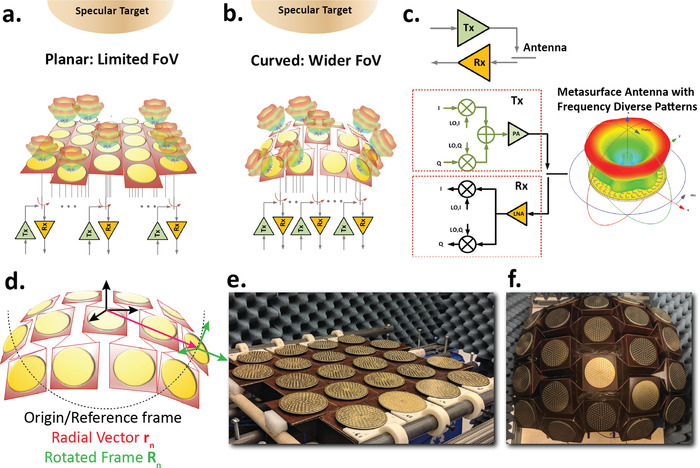2023-01-19 ペンシルベニア州立大学(PennState)
◆ペンシルベニア州立大学の研究者らは最近、その場レーザー支援製造法を用いてガスセンサーの製造プロセスを改良し、従来のドロップキャスト(ピペットを使って材料を1つずつ基板上に滴下する方法)を改善した。この成果は、Chemical Engineering Journal誌に掲載されました。
◆このプロセスでは、レーザーが、多孔質グラフェンフォーム基材の上に直接ナノ材料を刻み込みます。この基材により、皮膚や物体に適用したときに、センサーが伸縮し、柔軟性を持つようになる。
◆複数のナノ材料を用いて、研究者たちは、いくつかの小さなセンサーを並べて配置したアレイを作りました。新しいセンサー設計で、研究者達は、別の熱源の必要性を排除し、デバイスの製造の複雑さをさらに減少させました。新しい設計では、ガスに反応するナノ材料が多孔質グラフェンフォームの一本の線上に集積されており、ナノ材料が電極間の隙間を埋めていた従来の設計とは対照的である。また、1本の多孔質グラフェンフォームの抵抗がジュール熱を発生させ、自己発熱する。
◆その結果、工業用地のようにガスが急激に上昇した場合や、公害のように時間が経過してガスが蓄積した場合の監視や警告など、いくつかの用途に対応できる高度なセンサーが完成した。
◆将来的には、ナノ材料複合体をプログラミングして特定のガスに照準を合わせたり、複雑な混合物中の複数のガス種を識別したりすることで、センサーの機能を向上させる予定である。
<関連情報>
- https://www.psu.edu/news/engineering/story/place-manufacturing-method-improves-gas-sensor-capabilities-production-time/
- https://www.sciencedirect.com/science/article/abs/pii/S1385894722064361?dgcid=author
その場レーザー支援によるグラフェンフォームコンポジットの合成とパターニングによるフレキシブルなガスセンシングプラットフォームの構築 In situ laser-assisted synthesis and patterning of graphene foam composites as a flexible gas sensing platform
Jiang Zhao,Ning Yi,Xiaohong Ding,Shangbin Liu,Jia Zhu,Alexander C.Castonguay,Yuyan Gao,Lauren D.Zarzar,Huanyu Cheng
Chemical Engineering Journal Available online: 19 December 2022
DOI:https://doi.org/10.1016/j.cej.2022.140956

Abstract
Gas-sensitive semiconducting nanomaterials (e.g., metal oxides, graphene oxides, and transition metal dichalcogenides) and their heterojunctions hold great promise in chemiresistive gas sensors. However, they often require a separate synthesis method (e.g., hydrothermal, so-gel, and co-precipitation) and their integration on interdigitated electrodes (IDE) via casting is also associated with weak interfacial properties. This work demonstrates in situ laser-assisted synthesis and patterning of various sensing nanomaterials and their heterojunctions on laser-induced graphene (LIG) foam to form LIG composites as a flexible and stretchable gas sensing platform. The porous LIG line or pattern with nanomaterial precursors dispensed on top is scribed by laser to allow for in situ growth of corresponding nanomaterials. The versatility of the proposed method is highlighted through the creation of different types of gas-sensitive materials, including transition metal dichalcogenide (e.g., MoS2), metal oxide (e.g., CuO), noble metal-doped metal oxide (e.g., Ag/ZnO) and composite metal oxides (e.g., In2O3/Cr2O3). By eliminating the IDE and separate heaters, the LIG gas sensing platform with self-heating also decreases the device complexity. The limit of detection (LOD) of the LIG gas sensor with in situ synthesized MoS2, CuO, and Ag/ZnO to NO2, H2S, and trimethylamine (TMA) is 2.7, 9.8, and 5.6 ppb, respectively. Taken together with the high sensitivity, good selectivity, rapid response/recovery, and tunable operating temperature, the integrated LIG gas sensor array can identify multiple gas species in the environment or exhaled breath.



